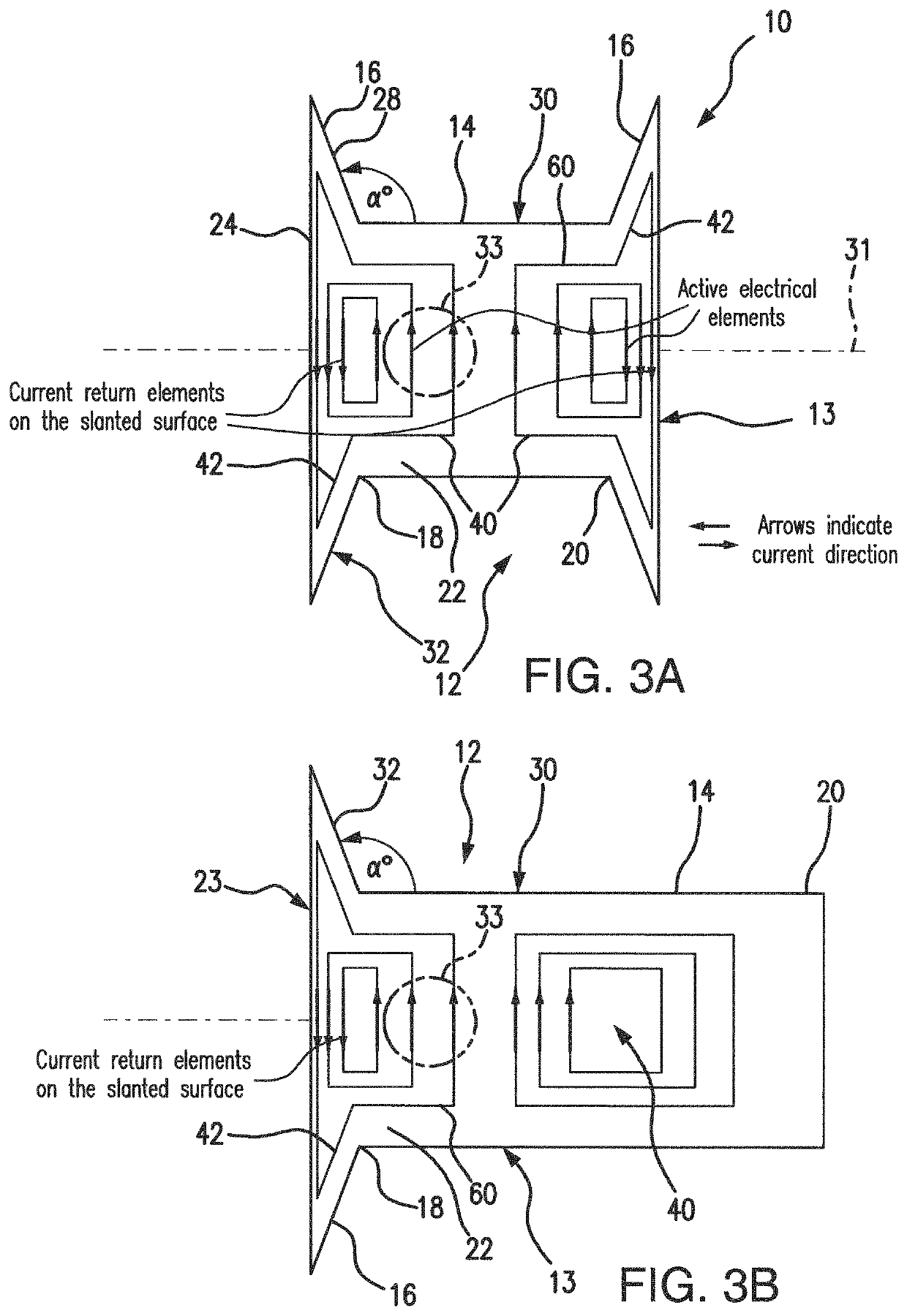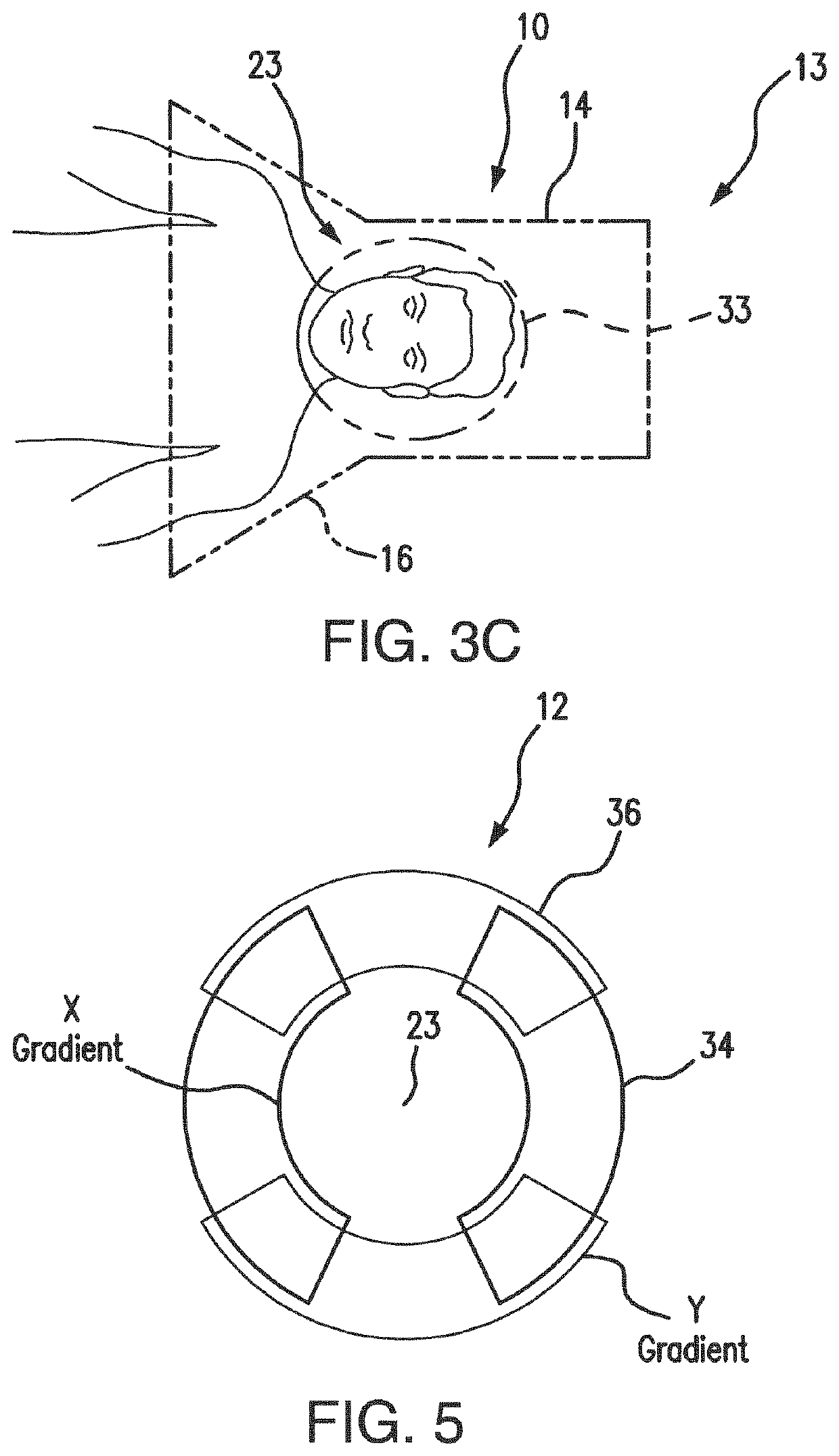Gradient coil with external direct cooling for brain magnetic resonance imaging
a brain magnetic resonance imaging and gradient coil technology, applied in the field of medical equipment, can solve the problems of limiting imaging resolution and sensitivity, limiting the performance of gradient coils, and conventional head-only gradient coils having two major technical limitations
- Summary
- Abstract
- Description
- Claims
- Application Information
AI Technical Summary
Benefits of technology
Problems solved by technology
Method used
Image
Examples
Embodiment Construction
[0084]Referring to FIGS. 3A-3C, 4A-4C, 5, 6A-6C, and 7-11B, the subject system 10 and method provide a unique solution for two major limiting factors of the conventional coil gradient technologies for head MRI scanning, namely, the “shoulder clearance” problem and heat dissipation. The design of the present gradient coil 12 is supported by an ergonomic approach, i.e., widening the entrance into the bore of the gradient coil to allow the shoulder clearance, enhanced by placing the current return paths on slanted planes which extend in parallel to the outline of the shoulders of the human patient. This effectively eliminates the limiting factor from the return paths that contribute to the length of the coil, while maintaining torque balance, and moving the region of the homogeneous field closer to the entrance of the system.
[0085]As shown in FIGS. 3A-3B and 4A-4C, the subject system 10 includes a gradient coil 12 secured in a predetermined fashion on a gradient coil holder housing 13 ...
PUM
 Login to View More
Login to View More Abstract
Description
Claims
Application Information
 Login to View More
Login to View More - Generate Ideas
- Intellectual Property
- Life Sciences
- Materials
- Tech Scout
- Unparalleled Data Quality
- Higher Quality Content
- 60% Fewer Hallucinations
Browse by: Latest US Patents, China's latest patents, Technical Efficacy Thesaurus, Application Domain, Technology Topic, Popular Technical Reports.
© 2025 PatSnap. All rights reserved.Legal|Privacy policy|Modern Slavery Act Transparency Statement|Sitemap|About US| Contact US: help@patsnap.com



